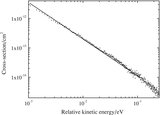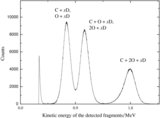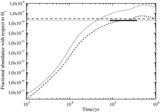Image Details

Caption: Figure 4.
Evolution of HCOOH in L134N using the latest release of the UMIST Database for Astrochemistry (solid black curve) with a C/O ratio of 0.4. The dashed curve and the gray curve are the results of the model including the branching fractions and thermal rate coefficient for the dissociative recombination of protonated formic acid as determined in this paper, with C/O ratios of 0.4 (dashed) and 0.7 (gray). All three models were run allowing the density to increase with time and including the depletion of gas-phase molecules onto dust grains. The dashed horizontal line is the abundance of HCOOH in L134N as given by Irvine et al. (1990).
Copyright and Terms & Conditions
© 2010. The American Astronomical Society. All rights reserved.






